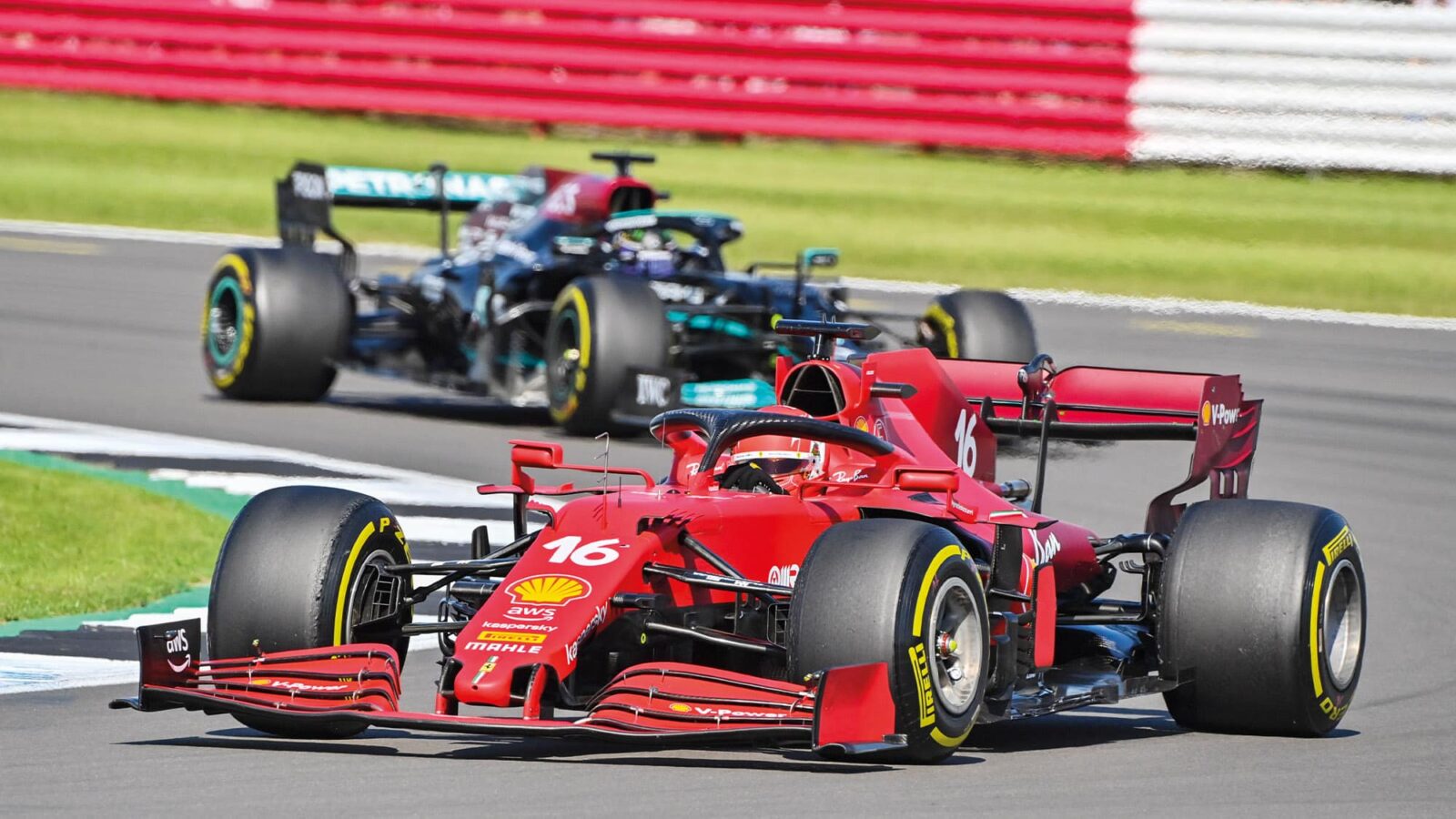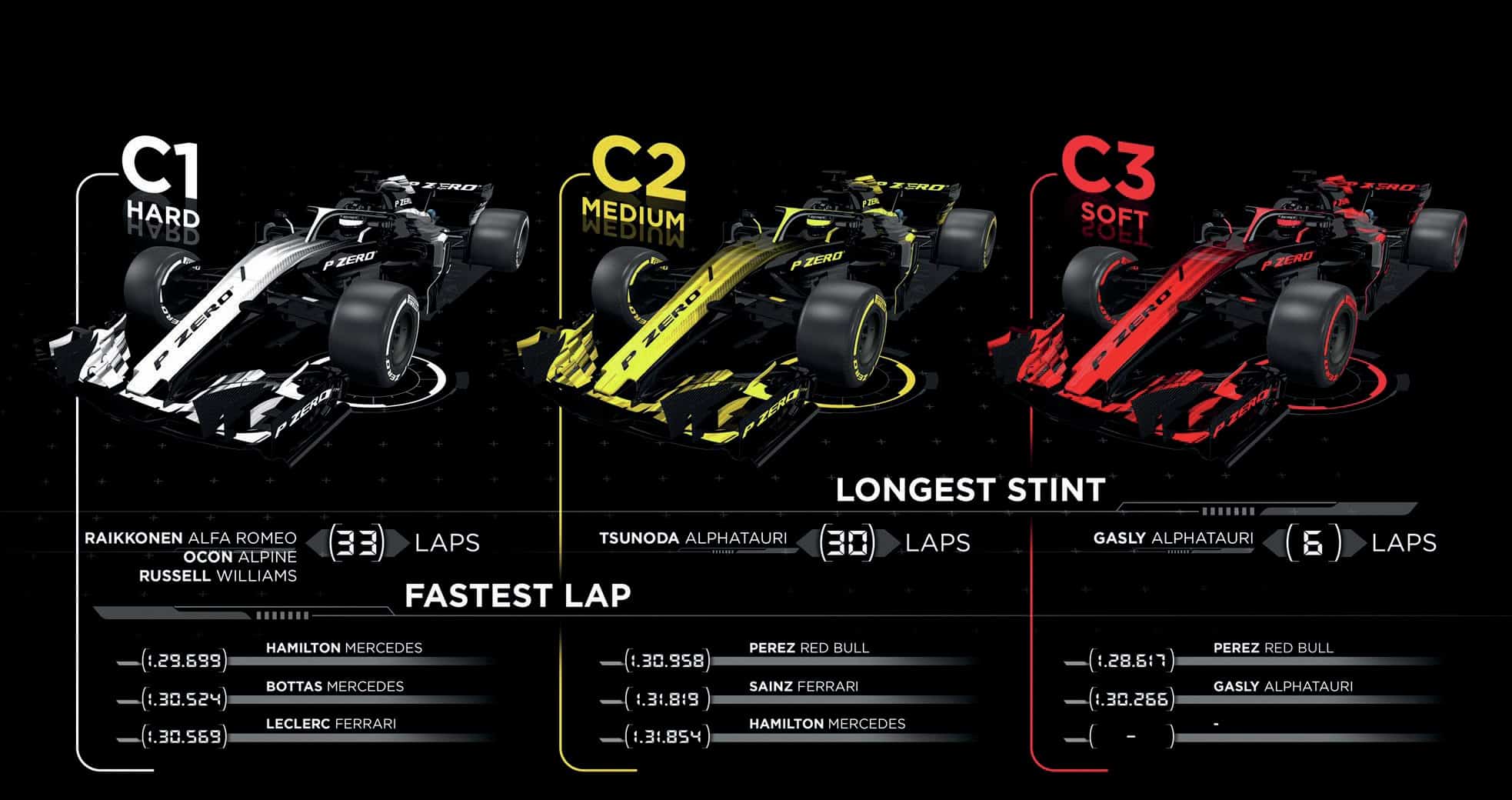How Hamilton reeled in Leclerc to win the 2021 British Grand Prix
But Ferrari compromised by fuel at Silverstone, says Mark Hughes

DPPI
At Silverstone, as soon as Lewis Hamilton had a) lost the lead to Charles Leclerc’s Ferrari as his momentum was checked by his collision with Max Verstappen and b) incurred a 10sec penalty for the incident (to be taken at the tyre stop), his race strategy was largely predefined.
With Hamilton unable to pass Leclerc on the restart, and with Leclerc setting a pace quicker than the cars Hamilton was trying to clear, Mercedes needed the Ferrari to stay out there leading, with Hamilton just following. The longer they could do that, the more time they’d pull out on the pack and therefore the fewer places Hamilton would lose when he took his 10sec penalty in the pits.
Leclerc wasn’t the priority at this point – how many cars might jump Hamilton when he took the penalty was the first order of business. They would have to save the fight with Leclerc for later. Because fighting past Leclerc – who would always have re-passed at the stops anyway, due to the penalty – would be at the expense of tyre life, enforcing an earlier stop for Hamilton before he’d pulled enough time out on the pack.
Five laps would be a typical reduction in tyre durability for driving all-out in a wheel-to-wheel dice when the limitation was wear of the front-left. If Hamilton had engaged Leclerc in battle and overtaken and been forced to pit five laps earlier, he’d likely have rejoined sixth after his penalty.
Hamilton went into full attack mode and Leclerc also upped the pace. But there was a complication in the Ferrari cockpit.
Seven laps earlier and he’d have been eighth upon rejoining. As it was, he was able to rejoin fourth.
Nor did Mercedes want to apply undercut pressure to Leclerc – for if he responded and Hamilton then stayed out, Leclerc’s undercut boost would have put Hamilton even further behind the Ferrari than if they had just followed at a discreet distance and given him a longer stint, allowing both to pull time on the pack.
This was the logical compromise to Mercedes’ conundrum. Hamilton stayed out for as long as his front-left tyre still had life in it. Which was lap 27, with 25 still to go. Leclerc, not needing to immediately respond to the undercut because of Hamilton’s 10sec penalty, came in two laps later. Hamilton rejoined and on his fresh tyres was able to quickly pass Lando Norris’s McLaren (which had stopped six laps earlier) and was eased past team-mate Valtteri Bottas, as co-ordinated by the pitwall. That put Hamilton 9sec behind Leclerc with just 12 laps remaining.
Now was the time to have that battle with the Ferrari which had been deferred in the first stint. Hamilton went into full attack mode and Leclerc, alerted by his team to the Merc’s progress, also stepped up the pace. But there was a complication in the Ferrari cockpit. He was very short of fuel. He could not run at absolutely maximum pace; he would have to lift and coast in some key places and let engine braking do the initial work. This was costing around 0.2-0.25sec of lap time.
Hamilton was now able to take chunks out of the compromised Ferrari: 1.1sec, 1.1sec, 1.1sec, 0.7sec, 1.0sec, 0.8sec, 1.0sec, 0.7sec, 0.8sec and 0.6sec on each subsequent lap until he was on its tail with two laps to go. This was the build-up to his taking the lead – ironically on the inside of Copse Corner. It had been a brilliant performance by Leclerc but the competitive comparison between the two cars was disguised by the tactical requirements of Mercedes in dealing with the 10sec penalty.

